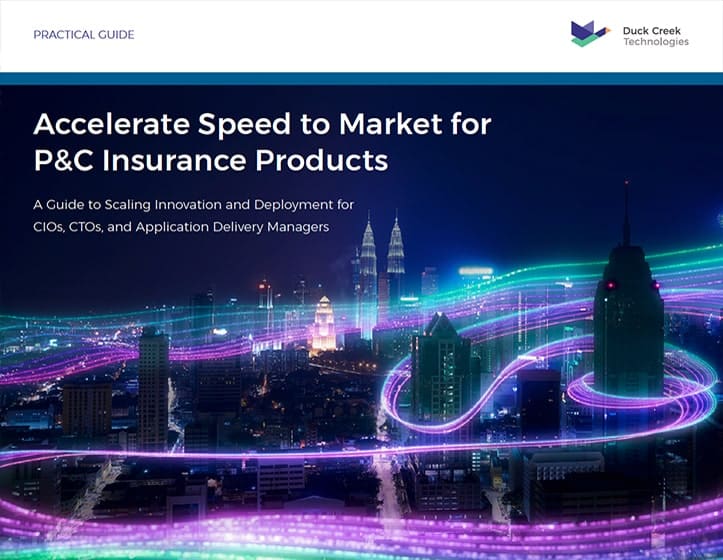Risk is the core business of property and casualty P&C insurance. However, the way you manage that risk is the ultimate differentiator between simply surviving and truly thriving. In an increasingly complex landscape of climate events, cyber threats, and shifting customer expectations, traditional risk management is not enough. The most forward-thinking carriers aren’t just reacting to risk: they’re proactively shaping their destiny.
High-performing carriers are already seeing the payoff, reporting up to a 20% reduction in claims and improved profitability by asking more strategic, operationally focused questions
This blog provides you with six probing questions that every CEO should be asking to elevate enterprise risk management (ERM), drive sustainable profitability, and position their organization for growth. It’s time to move beyond the old playbook and build a resilient, future-proof insurance carrier.
How to Improve Loss Control in P&C: Six Questions
The most successful P&C carriers are defined by the questions they ask—and the bold actions they take based on the answers. The following seven questions are designed to challenge the status quo, helping you identify opportunities to move beyond compliance and transform loss control into a powerful engine for profitable growth.
1. Are We Leveraging Loss Control for Growth, Not Just Compliance?
Loss control is frequently viewed as just a regulatory requirement. Insurance executives must ensure it is treated as a business differentiator, integrated into sourcing, underwriting, and customer retention to unlock strategic value. (Insurance Journal, Viewpoint: Loss Control Services Are Underused Tools to Reduce Identity Security Risk)
2. How Committed Are We to Helping Our Policyholders?
Most insurance organizations may not be fully committed to risk management, as evidenced by the limited size and budget of their risk functions—averaging just 0.8% of staff and 0.3% of operational expenses. (McKinsey & Company. Elevating the risk function in insurance: Building a strategic advantage)
These disparities suggest that Chief Risk Officers often operate without a standardized model or strategic mandate, leaving their organizations exposed to emerging risks and not taking advantage of the goodwill and profit to be gained.
3. How Are We Using AI and Automation to Predict and Prevent Loss?
Applying advanced risk assessment before underwriting can significantly enhance performance, with insurers seeing a 40–50% improvement in loss ratios. This proactive approach drives greater efficiency and profitability across the entire insurance value chain by enabling smarter risk selection and targeted interventions. (McKinsey & Company, AI Meets Insurtechs: How Firms Can Close the Global Protection Gap)
4. Does Our Loss Control Directly Support Underwriting and Claims Excellence?
Strategic Enterprise Risk Management functions as a unified ecosystem. When loss control insights flow seamlessly into underwriting and claims, supported by real-time data, decision-making accelerates. So do the results; driving better claim outcomes and lower loss severity.
5. Are We Measuring and Reporting Retention Gains from Risk Initiatives?
Preventing losses delivers value to both insurers and their customers by reducing claims and enhancing protection. To achieve profitable growth while meeting evolving customer expectations, insurers must adopt a “predict and prevent” model—leveraging proactive risk management and offering fee-based services that complement traditional coverage. (Deloitte. Fee-Based Risk Management Services Can Boost Insurer Revenues in an Era of ‘Predict and Prevent’)
Carriers using advanced loss control, like Duck Creek Loss Control, report up to 18% higher retention, which should be tracked as a KPI at the executive level.
6. Do We Deliver Real-time Value and Transparency to our Clients?
Your clients expect ongoing risk management, not just claims processing. Interactive dashboards, virtual surveys, and regular communication build trust, engagement, and customer loyalty. This sets you apart in competitive markets.
7. Do We Have the Talent and Culture to Execute on This Vision?
Even with the most advanced technology and a flawless strategy, a company’s ability to innovate and grow is dependent on its people. Successful carriers are not just adopting new systems; they are investing in the training, processes, and cultural shifts necessary to support and drive them.
True transformation requires a company-wide commitment to upskilling employees for new, data-driven roles, empowering teams to operate with agility, and fostering a culture that embraces change as an opportunity, not a threat. Without this focus on talent and culture, even the best technological blueprint will fall short.
“Loss control isn’t just compliance—it’s a growth engine. Carriers embracing digital ERM are seeing 20% fewer claims and up to 18% higher retention.” (Reported by users of Duck Creek Loss Control)
Turning Questions into Competitive Advantage
These seven questions are more than just checkboxes; they are a blueprint for transformation. CEOs who embed digital ERM into their strategic agenda, leveraging automation, AI, and data-driven insights, create a resilient, growth-focused organization capable of deepening customer relationships and sustaining profitability.
To turn this blueprint into reality, your organization must:
- Make strategic enterprise risk management a core part of your strategic agenda to ensure that growth initiatives, including improving claim outcomes and lowering loss severity, are prioritized and funded. This leads to better loss ratios, as you proactively identify and mitigate risks.
- Explore modern software options to create a unified ecosystem that integrates and automates loss control, underwriting, and claims for data-driven insights. This automation of tasks reduces manual errors and improves operational efficiency.
- Upskill employees for new, data-driven roles and responsibilities that emerge from technological advancements. This maximizes the return on technogy investment by ensuring employees have the skills to fully leverage new software.
The Bottom Line: From Risk Management to Strategic Advantage
The future of P&C insurance isn’t about avoiding risk; it’s about mastering it. The questions we’ve explored here are not just a to-do list; they are a blueprint for a resilient and profitable future. By elevating Enterprise Risk Management (ERM) from a compliance function to a strategic growth engine, you can unlock new opportunities, reduce loss ratios, and deepen customer trust.
The time to act is now. By making ERM a core part of your strategic agenda, modernizing loss control and fostering a culture of innovation, you can move your organization beyond simply surviving to truly thriving in a world of constant change.
Discover how leading insurers have transformed their businesses through more effective loss control.






